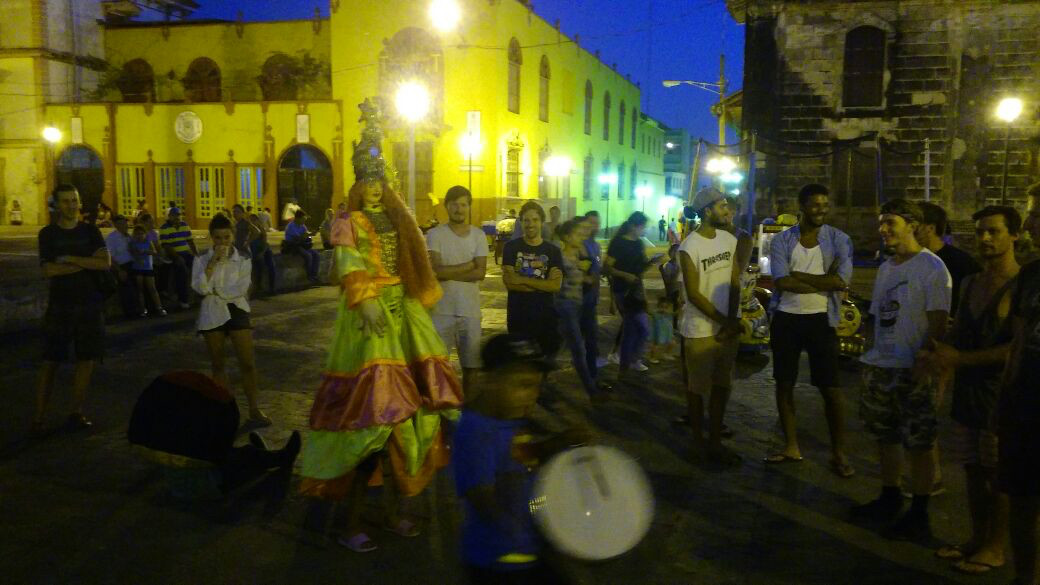Of Giants and Midgets in Nicaragua
Giants and midgets? That's not the politically correct nomeclature!, you might exlaim with indignation. Well, maybe in our case it is. If you've been to Nicaragua in late November or early December, you'll understand. During that time (and well beyond nowadays), mysterious characters roam the city of León, Nicaragua. And very noticeably so. Here's an introduction to the cultural event of the year in Nicaragua.
First, let us reassure you that those deafening explosions at the crack of dawn are not the precursors of an armed conflict. In fact, most of them have a religious background. They are the countless churches' preferred way to announce something important: a procession, a holiday, the celebration of a patron saint. Much to the chagrin of the tranquilo traveler, longing for a good night's rest after a bumpy chicken bus ride, there are dozens of churches in León and a lot more reasons for them to celebrate.
In the city of León, the (street) party starts in the early days of November and climaxes in La Purisima, Immaculate Conception Day, on December 8th. Sure, Nicaraguans celebrate Christmas and the New Year but by far the most celebrated holiday in December is La Purisima. So what is it all about? As the name suggests, it is essentially about the conception of Mary - but there is a lot more to it. It's religious, it's folkloric and, believe it or not, volcanoes have to do with it, too. But that's a different story. In the weeks prior to the big day, the presence of giant ladies, big-headed dwarves, accompanied by wild drumming can hardly be ignored. Here's the essential cast for your Purisima street performance:

La Gigantona (giant lady): Her head (made of wood or papier-maché) sits on a wooden structure with struts directed downwards. She's dressed festively and always wears a long skirt. Hidden inside this 3 meter puppet there's usually an adult, performing circular movements that make the skirt fly in the air. The Gigantona came to Nicaragua with the colonial rulers and, through its imposing stature, symbolizes the predominance of the white colonialists over the indigenous population.
El Enano Cabezon (large-headed dwarf): El Enano, with his disproportionate papier-maché head, represents the physically small but intelligent (hence the enormous head) indigenous man. On the one hand, el Enano Cabezon symbolizes the subjugated colonized Nicaraguan vis a vis the giant lady, on the other he is also foolishly in love with her, and heartbroken over her inability to respond to his love.
El Coplero (reciter): El Coplero, whose face is usually covered by a mask, recites (generally sad) poems that can have a social or political background.
El Tamborilero (drummer): The Tamborilero is the drummer who makes the Gigantona dance to his wild rhythm. This adds another element in the tug-of-war between the colonial power and the indigenous population. As much as La Gigantona is admired for her beauty, elegance and authority, having her dance to the rhythm of those drums makes that relationship between the oppressed and the oppressor just a little bit more ambivalent.
Quien causa tanta alegría? you will hear kids and adults alike shout incessantly. Which is why La Purisima is also known as La Gritería (the Shouting). It's a spiel that keeps repeating itself: most homes will have an altar in honour of the Virgin Mary and when confronted with the ubiquitous question, will hand out a gorra (candy) to the questioner, accompanied by the response La concepción de María! - Who causes so much joy? The Virgin Mary! If you're in León during that time, this is an event you can't miss - be it only for the free candy!